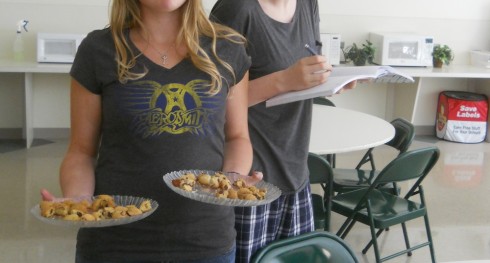
My chemistry students did a little experiment to investigate the effect of varying baking soda amounts on cookies. They did four batches of cookies based off of the recipe on the back of a bag of chocolate chips. The batches used:
- No baking soda.
- The amount of baking soda recommended by the recipe.
- Double the baking soda.
- The recommended amount of baking soda plus about 30 ml (1 tablespoon) of orange juice.
The last batch used orange juice for its acidity. We hypothesized that more baking soda, and more acidity, would increase the size of the cookies, making them fluffier. The hypothesis was supported by our rather tasty evidence.

Although our focus was on the physical chemical reaction of the baking soda (sodium bicarbonate) and acid to produce the carbon dioxide bubbles that make the cookies rise, the making of the cookies also allowed us to talk a little about the food science behind the role of the flour. Specifically, we discussed the long chain gluten proteins that stretch out and trap the bubbles. We’ll talk a bit more about this next time when we make bread.